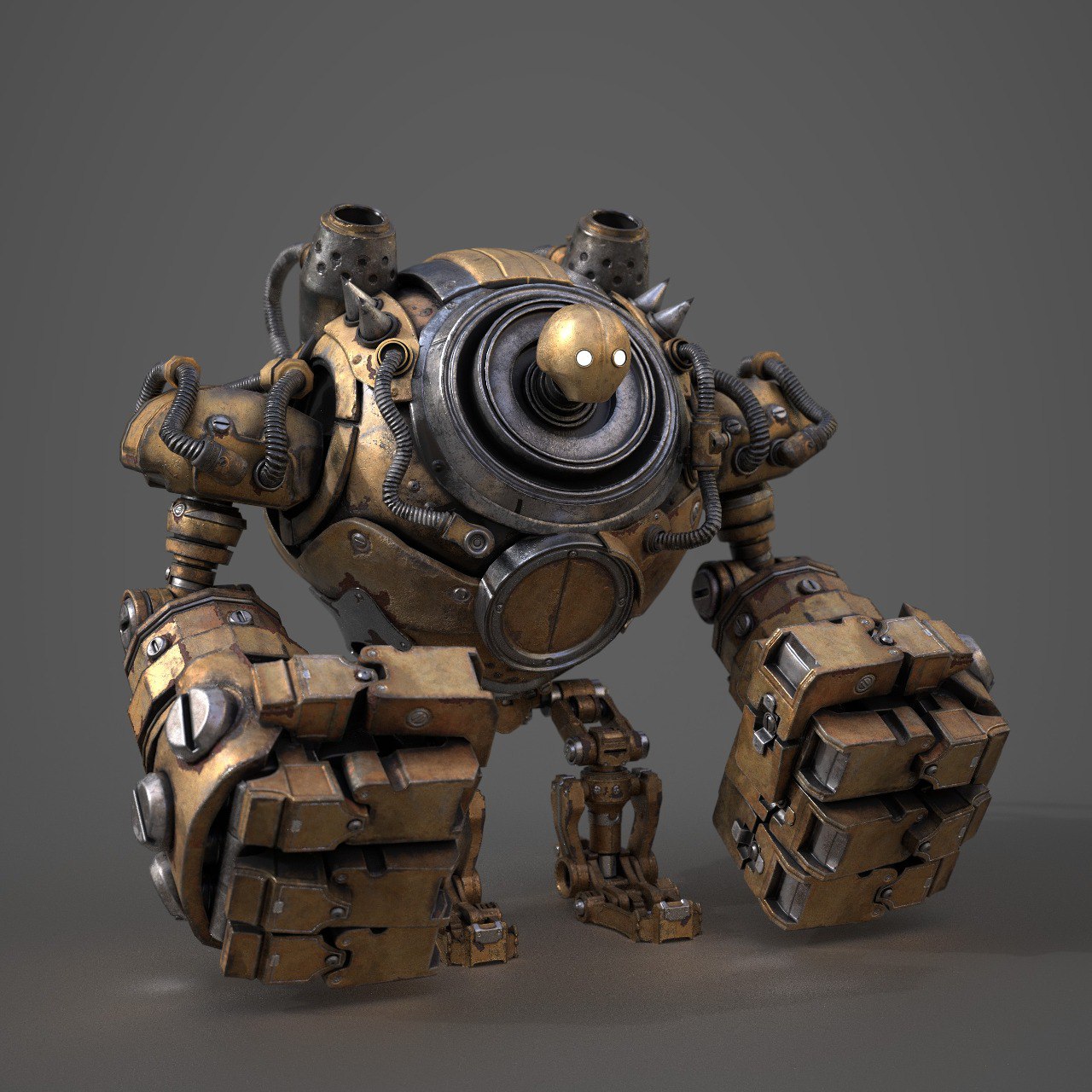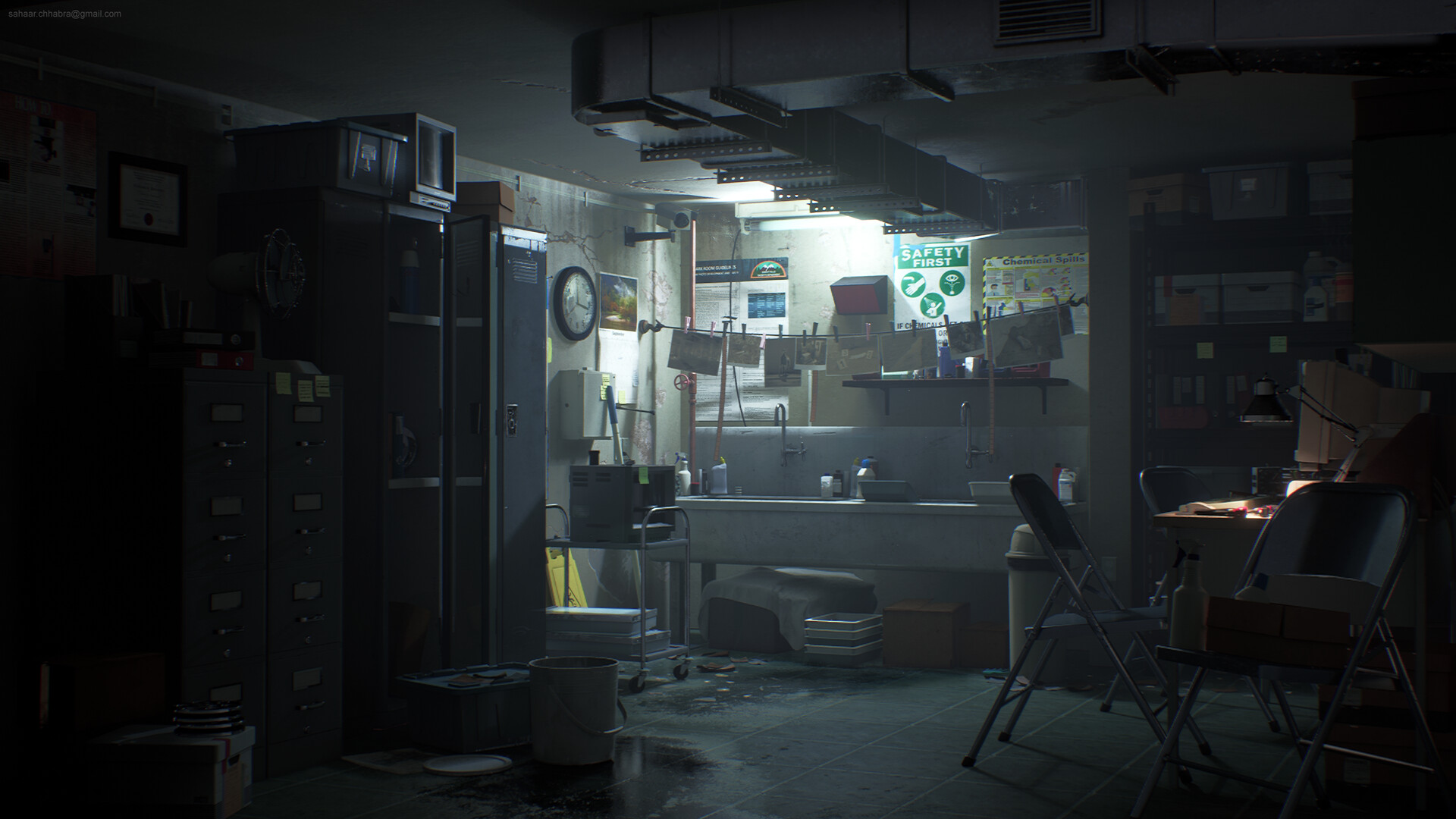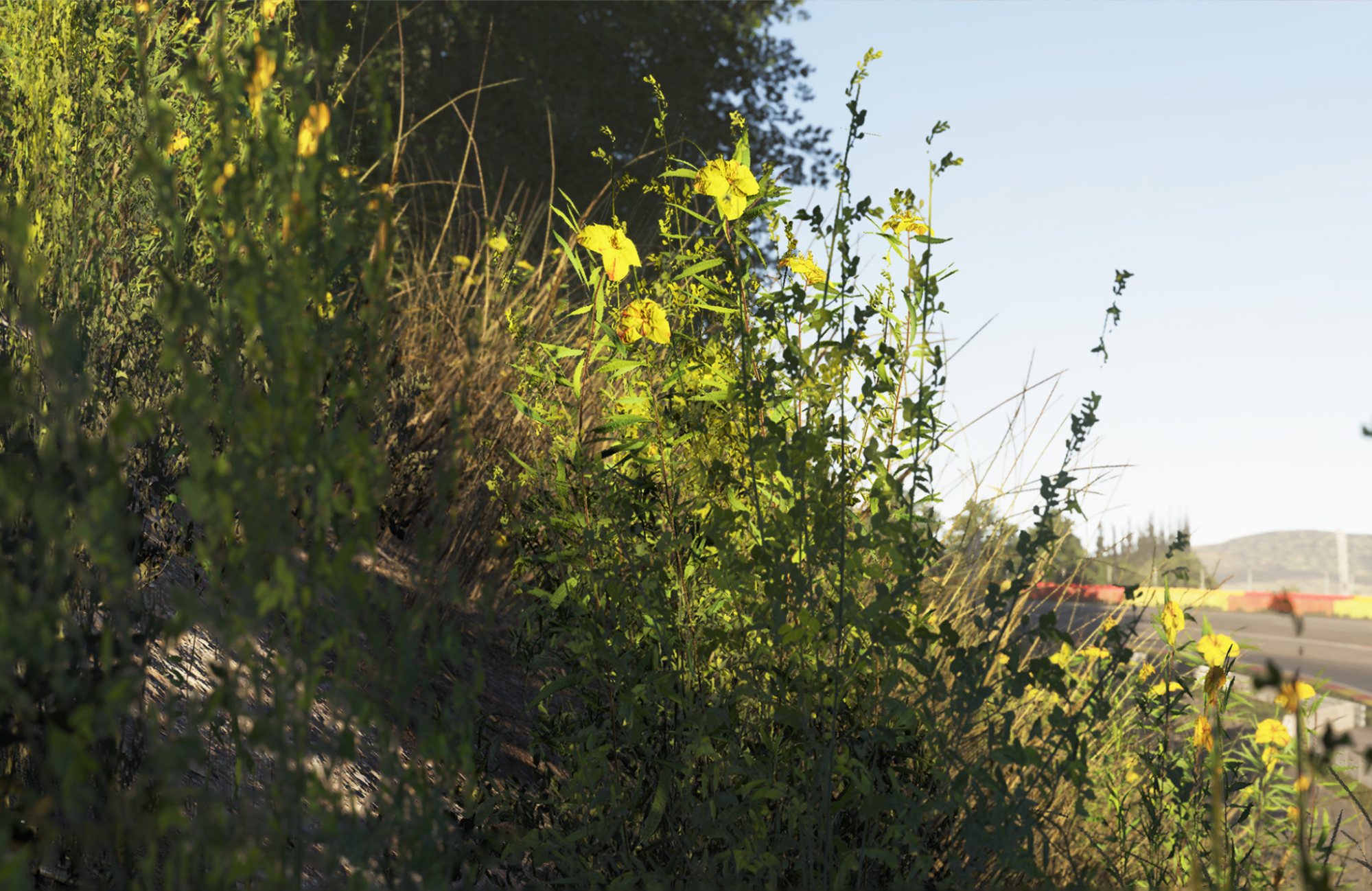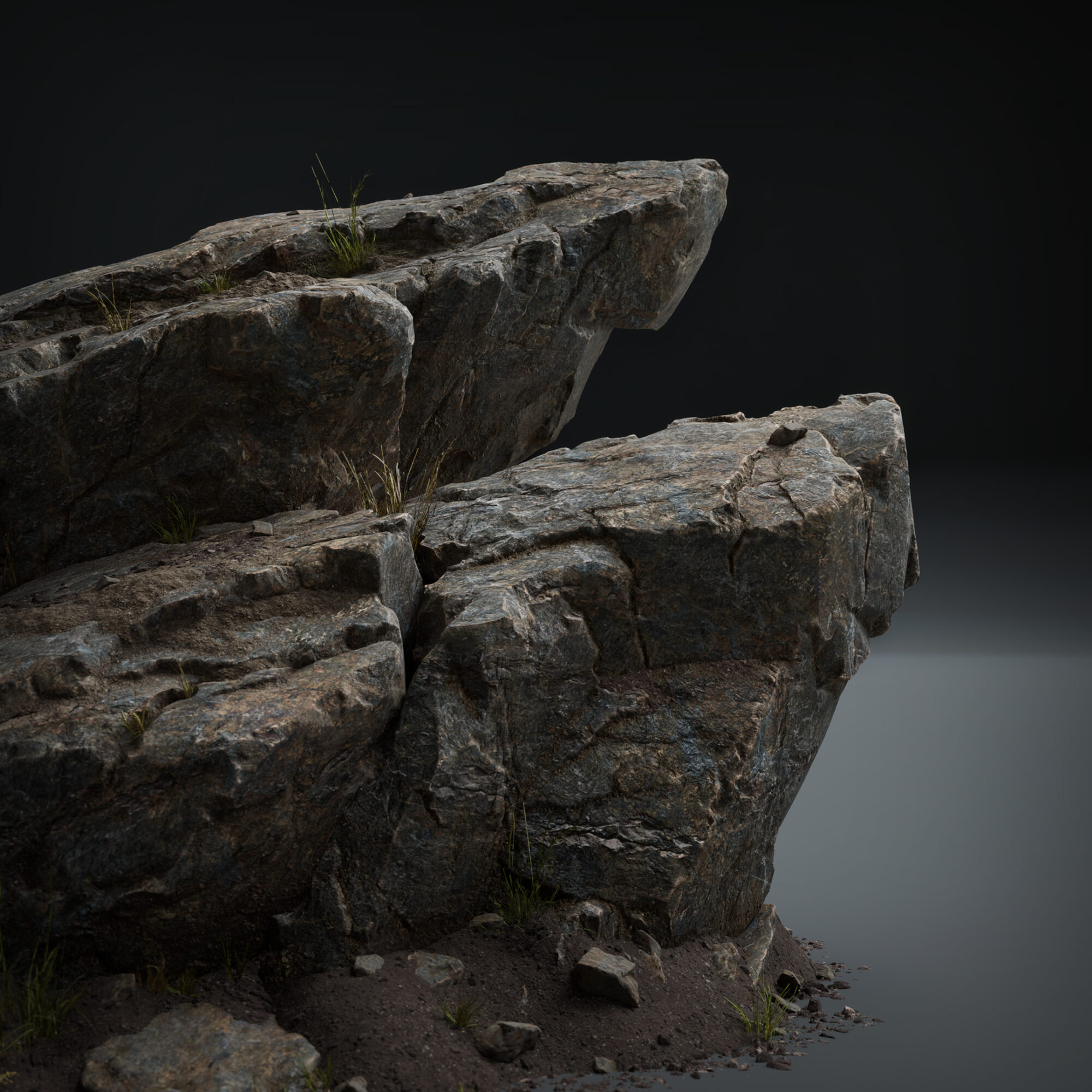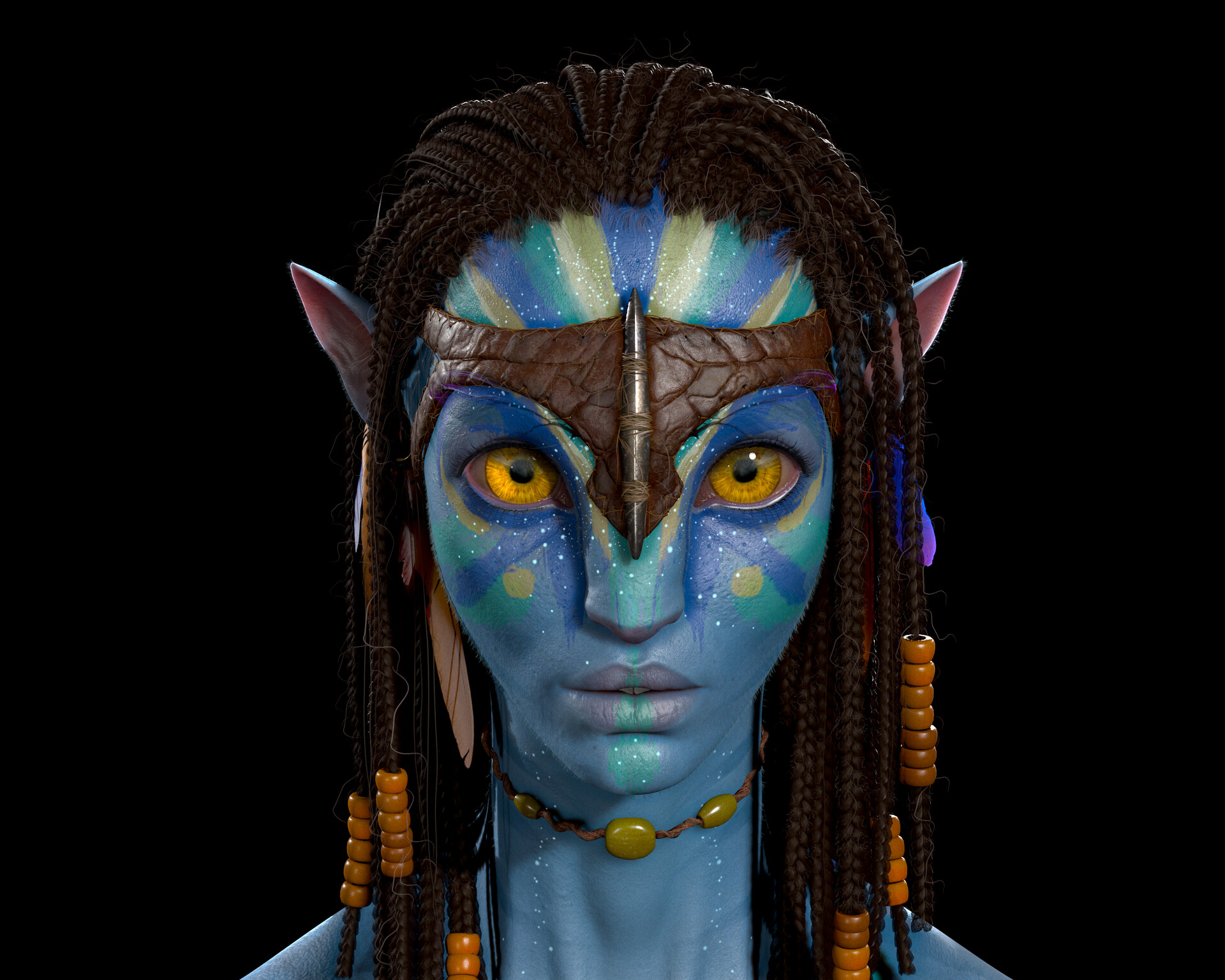Home

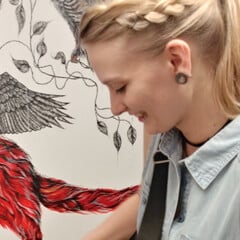
Introduction
Hi! My name is Lea Kronenberger, I’m a 3D Art Lead at Frictional Games and love working on personal projects in my free time.
I was an architectural draftswoman until about 5 years ago and then decided to follow my dream to study 3D and start out in the games industry.
Goals and Planning
My main goal was to practice composition and lighting setup in Unreal engine.
I decided to use Artbreeder AI to generate a random concept as a rough guideline and to mainly use third party assets I already have in my Unreal Marketplace library.
The only objects that I wanted to be custom-built were the hut with some detail props around it.
The reason I chose Artbreeder AI was to start with a basic guideline since I usually struggle with creating environments without concept art, but I still liked that the rough nature of the generated images provides a lot of freedom for interpretation.
Since this was supposed to be a quick practice scene and my goal was not to practice modeling or texturing, it seemed fitting to use as many library assets as possible.

For this environment, I skipped the blockout phase and jumped straight into production by importing all asset packs that seemed fitting.
The packs I ended up using were, in no specific order:
- Abandoned Factory
- Amplify LUT Pack
- Brushify Environment Shaders Pack
- Chameleon Post FX
- Construction VOL 1+2
- Dekogon Toolset Vol 1
- Dark Forest
- Dynamic Grass Lite
- Flowers and Plants Nature Pack
- Industry Props Pack
- Particle Effects Demo
- Landscape Backgrounds
- Scifi Kitbash Level Builder
- Spline: Ropes – Hoses – Cables
- Water Materials
- And some Megascans assets
Landscape
I started with sculpting and painting the landscape inside Unreal, using a premade landscape material setup from the Brushify – Environment Shaders Pack, from which I also used mountain distance meshes to fill in the background.


Throughout the whole process, I focused on the main shot first and filled in other areas after that to have a closed environment and be able to take some supporting shots of the scene.
I didn’t use any additional references for that and just filled in content that seemed fitting to me.
I think this is a good practice when working with any concept, because you are forced to think about the environment design as a whole and make your own choices.
Final support shots:

Asset Placement
After sculpting the main shapes, I started by placing a few trees, buildings and props from various asset packs by drag & drop and surface snapping was enabled.
The clay hut was modeled a bit later, so I used placeholder meshes for it in the beginning. Since the hut is the main focus point of the scene, I wanted it to fit believably into the environment, so I decided to create a way up with stairs and a proper flat area on top.

I think it helps a lot to think about it from a player’s perspective – if this was a game environment, how would you show the player where they are supposed to go and how will they get there?
For the vegetation and rocks I only placed very few by hand (mostly big ones that I wanted to fine adjust for the final composition) and mostly used the foliage tool for placement instead.
Here you can see all the assets highlighted that were placed by hand:

And these are all the foliage instances:

I did only focus on composition and lighting practice for this environment, so for a game ready scene, I would have probably placed less plants.
I really like to work with the foliage tool in Unreal, because it allows for very flexible and fast placement with fast iteration times and is also easy to use.
Modelling & Texturing the Hut
After I was happy with the general composition, I started modeling the hut.
For this, I used a bunch of different tools and again, didn’t put too much effort into each step, since my goal was to do a quick composition practice and not to create perfect models, so they only needed to work from a distance for this purpose.
It can be very easy to get lost in details and depart from the goals that you set at the start of a project.
For me, it is usually hard not to try to make everything perfect, so it was a very good practice to just learn to stop at a certain point, thinking about the project as a whole and deciding that more effort is simply not required for a certain part.
For example, if you have a lot of small props in a scene that are only background clutter and will not be seen from up close, it simply doesn’t make sense to create them with the same amount of detail and effort as foreground things, because the viewer would not notice this anyway.
The hut was made in Modo with the MOP booleans and standard modeling operations to get an interesting shape. Since the Artbreeder image was only a rough guideline, I had a lot of freedom here and just went with a shape that I liked.
The windmill and other support props around the hut were also made with Modo and a simple box modeling technique.
I recently started learning Houdini, so I wanted to use it to try and generate a highpoly model with edge wear and experimented also with a couple of other things that I partly scrapped later (hay sheets, rocks, dirt skirts, cable clutter).

Then I had the idea to have a fabric wrapped over the hut, for which I used Marvelous Designer.
Finally, I wanted to test a couple of different techniques in the new Blender to place cables and use the hut for this as well.
Drawing cables with the grease pencil was especially fun!

For UV Unwrap I simply used The Ministry of Flat automatic UV Unwrap tool for everything.
Then I baked the maps for the hut in Substance Painter and textured everything with just using premade smart materials.

After importing it into the engine, I tried out a couple of different Substances for the foil, using the Substance plugin and ended up using a totally different material for it, because it fits better to the final composition.
All other assets in this environment were not created by me and came from the asset packs listed above.
Lighting
At the start of the project, I set up the lighting to be fully dynamic for fast iteration times and so that I wouldn’t have to worry about lightmap UVs on third-party assets.
The lighting mood was changed a couple of times along the way and after asking a couple of other artists for feedback, I decided on this awesome piece called More snow by Raphaëlle Deslandes (https://www.artstation.com/artwork/LOdgP) as a rough mood guideline:

I really recommend researching references for lighting/mood, even if you don’t want to try to recreate it exactly, because it is helpful to analyse colors and contrasts in an image to understand why a mood works and learn what of it you can apply to your own work.
This is definitely something I want to practice further in upcoming artworks as well.
As for the basic lighting setup, I didn’t do anything special – it is just a simple directional light for the sun, a skylight to brighten up shadows, a point light for the hut and a spot light for the light generator prop, as well as a few helper lights that i placed for the final presentation.
I adjusted color, temperature and volumetric scattering for most of these to get the desired look.

For the skybox, I just used the default Unreal sky sphere, exponential height fog, and sky atmosphere blueprints.
I enabled atmospheric fog and used a HDRI texture from the Flowers and Plants Nature Pack as an inscattering color cubemap to get the fog to blend nicely with the sky.
Then I adjusted the atmosphere mie settings a little to move the lighting scenario more toward the end of the day sunlight instead of super bright midday sun.
Particles & Post FX
I used a couple of different snow particles from the Unreal Particle Effects Demo to make the environment feel dynamic. The final look is also mostly achieved by using a LUT from the AmplifyLUTPack in the post effects.
The final touches of background fog were achieved with a distance fog gradient from the Chameleon PostFX pack and a few fog sheets.
Overview of fog and post settings:

Composition & Feedback
When working on something, it becomes very hard to see potential issues at some point, so it is always a good idea to ask others for feedback.
Even if you are confident with a scene, others might see it from a different perspective and have ideas for improvement that you haven’t thought of yourself.
For this environment, I added a lot of the things that make the composition work only at the very end, after receiving feedback on it from some friends and other artists in Discord groups.
So a huge thanks again to all the wonderful people who helped me finish it!
Here you can see the main shot in its original version (upper) and after feedback applied (mid and lower):

All assets were placed in a way that help draw attention to the hut, which is supposed to be the main focus of the composition.
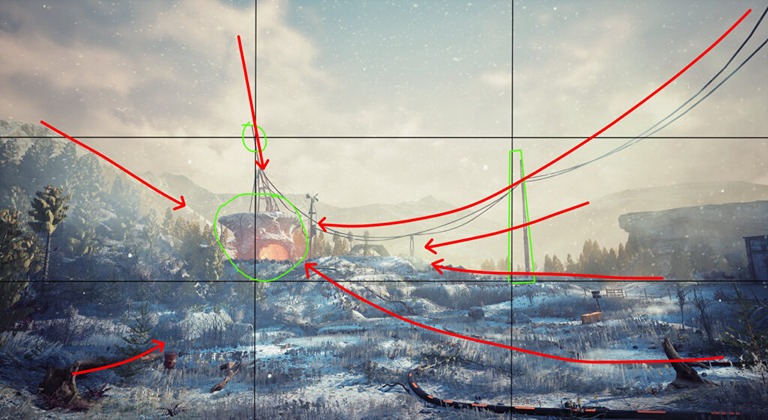
I learned a lot with this environment and hope that you found something useful in this article as well!

